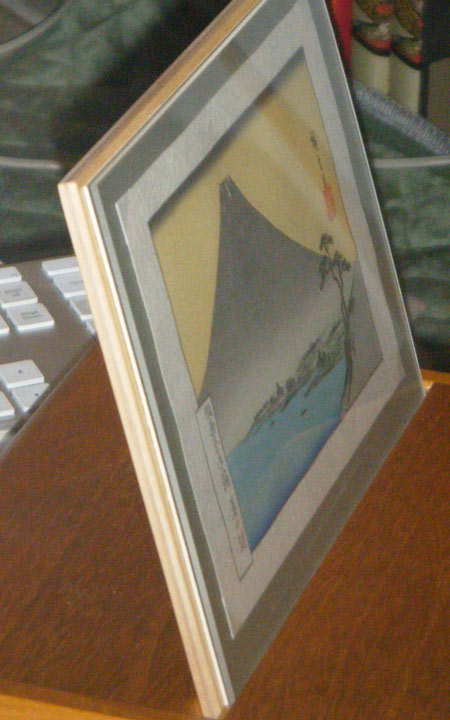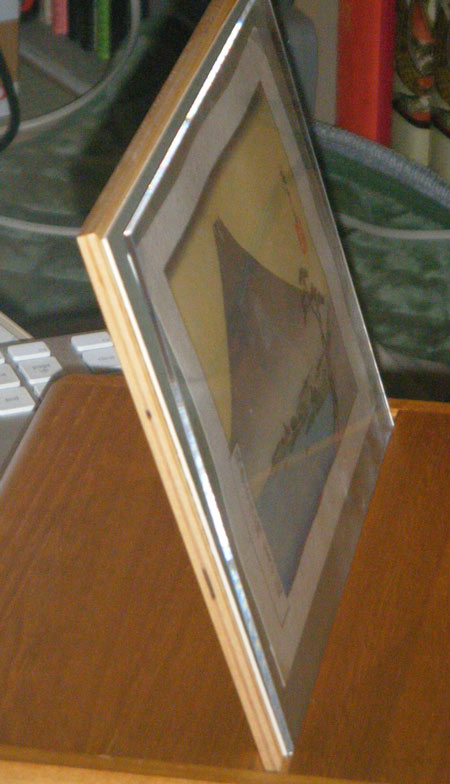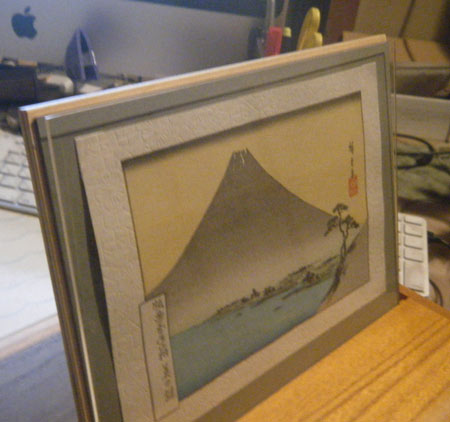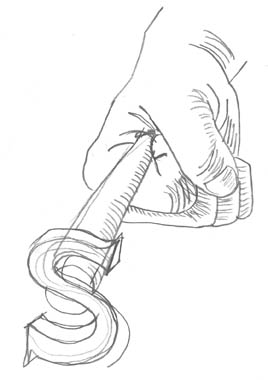Today's postings
- [Baren 41046] Re: Washing felt blankets and exchanges (Tibi Chelcea)
- [Baren 41047] Re: white line printing day 2 (Louise Cass)
- [Baren 41048] Re: white line printing day 2 (Barbara Mason)
- [Baren 41049] Re: Silent Members (Shireen Holman)
- [Baren 41050] Re: Silent Members (aqua4tis # aol.com)
- [Baren 41051] Baren Member blogs: Update Notification (Blog Manager)

Message 1
From: Tibi Chelcea
Date: Tue, 13 Apr 2010 14:05:17 GMT
Subject: [Baren 41046] Re: Washing felt blankets and exchanges
Send Message: To this poster
I don't think I trust my washer too much.
When are people from the waiting list for exchange 45 going to be moved to
the main list? I think it's been more than a week since the registration
started.
Thanks,
Tibi

Message 2
From: Louise Cass
Date: Tue, 13 Apr 2010 14:42:37 GMT
Subject: [Baren 41047] Re: white line printing day 2
Send Message: To this poster
polyurethane but that along with varathane, etc altho' perfect for
sealing various woods doesn't contain any oils and as far as I know are
made up of totally synthetic resins- I imagine that attempting to cut
thru' it would be like trying to cut glass??!!
Louise
www.LCassArt.com

Message 3
From: Barbara Mason
Date: Tue, 13 Apr 2010 15:43:29 GMT
Subject: [Baren 41048] Re: white line printing day 2
Send Message: To this poster
My best
Barbara

Message 4
From: Shireen Holman
Date: Tue, 13 Apr 2010 18:08:35 GMT
Subject: [Baren 41049] Re: Silent Members
Send Message: To this poster
I'm not sure that it makes a whole lot of sense in bits and pieces,
but I would love any feedback.
Shireen

Message 5
From: aqua4tis # aol.com
Date: Tue, 13 Apr 2010 19:57:24 GMT
Subject: [Baren 41050] Re: Silent Members
Send Message: To this poster
Digest Appendix
Postings made on [Baren] members' blogs
over the past 24 hours ...
Subject: Mystique Series - Yet more fun and games!
Posted by: Dave Bull
|
Yes, yet another entry in the 'Fun and Games' department! The acrylic sheets for the Mystique cases were delivered yesterday afternoon. I ordered them from the same man who did the acrylic display stands for the previous Treasure Chest around five years ago. He did a good job that time ... Here's a paraphrase of the start of our conversation yesterday: He: Here you are; this is the first 100 or so, as you requested. All polished up, and ready to go. Me: (opening the package and taking one out). Looks nice - that's a very good shine on the edges; I think the customers will be very happy with this! He: The reason it takes such a good polish is that these are the more expensive 'cast' acrylic, not the standard sheet stuff like the sample we discussed earlier. I had a bunch of this in my stockroom, so decided to give you the extra 'service' and used this instead. Me: Looks good, but how does it compare when it comes to scratching and maintenance ...? He: Don't worry, no difference there at all. It also feels more 'solid', as it's a tad heavier. Me: Yes, it does have a good solid feel to it ... He: That's because this cast stuff isn't 2.0mm thick, like that cheaper sheet stuff; it's around 2.3 instead. Me: (sudden silence) He: What's wrong? What's wrong is - of course - that the cases were made based on a 2.0mm thickness for the acrylic. And I demanded - and the makers complied - that the parts should fit together just ... so! With no wobble or looseness. This extra thickness has screwed that up. These acrylic sheets can be forced into place, but only by pushing and jamming them into the slot. And once they are in there ... even more problems surface. Here's our original sample, with the 2.0 standard sheet acrylic:  And here's what it looks like with a sheet of this (beautiful) new stuff jammed into place:  The squeeze at the bottom forces the top apart, giving an ugly spread to the parts. And what is even worse, the acrylic now casts a shadow down onto the mat and print:  He and I looked at each other, thinking about how to get out of this jam, but there really isn't much thinking to do. We can't possibly afford to toss these and start again, and there is no way that he can 'thin' them . . . |
This item is taken from the blog Woodblock RoundTable.
'Reply' to Baren about this item.
Subject: Sticks and Stones and Broken Bones
Posted by: Annie B
 Thanks everyone for the thoughtful comments and input on my last post. Even though this entire series has come about through exploring my own family history, this particular print is the most personal and feels scary to blog about. Thanks everyone for the thoughtful comments and input on my last post. Even though this entire series has come about through exploring my own family history, this particular print is the most personal and feels scary to blog about.But I'll press on... It's impossible to make any accurate comparisons between today's self-identified "gays" and the apparently homosexual people that history has recorded over the millenia, simply because the notion of "gay" or "homosexual" as we know it now didn't really exist. Yet it's clear that from Egypt to the Roman Empire to native America, men have loved men and women loved women as far back as historians can document. I think this fact makes it clear that, far from being "unnatural," homosexuality is a naturally-occurring human trait. Whether or not it's desirable is another matter and that is culturally defined. Many cultures, but not all, have defined homosexuality as undesirable. In 1636 when John Alexander and Thomas Roberts appeared before the Puritan New England court, homosexual acts were called sodomy and were punishable by death. It's interesting to note, however, that the court record does not use the word sodomy in regard to these two. In their book "The Times of Their Lives," James and Patrica Deetz note that the governing officials of Plymouth rarely implemented the death penalty, which the authors attribute to their fear of overstepping their authority with England given that they had no charter. John Alexander's punishment -- being whipped, branded with a hot iron and banished -- was severe enough. Branding was a fairly common punishment used for thieves (branded with a "T"), killers ("M" for manslaughter), and rogues ("R" for, well... rogue). I've sketched out a branding iron with an "S" for "Sodomite."  Thomas Roberts received the lighter sentence of being whipped and returned to his "master." This indicates that Roberts was an indentured servant, under contract to an employer for a fixed period of time in exchange for transportation, food, lodging etc. Since Roberts "belonged" to someone, the court was probably unwilling to interfere with his master's property rights. Sodomy was illegal in most U.S. states until the 1960s when some states began to decriminalize it. Yet . . . [Long item has been trimmed at this point. The full blog entry can be viewed here] |
This item is taken from the blog Woodblock Dreams.
'Reply' to Baren about this item.